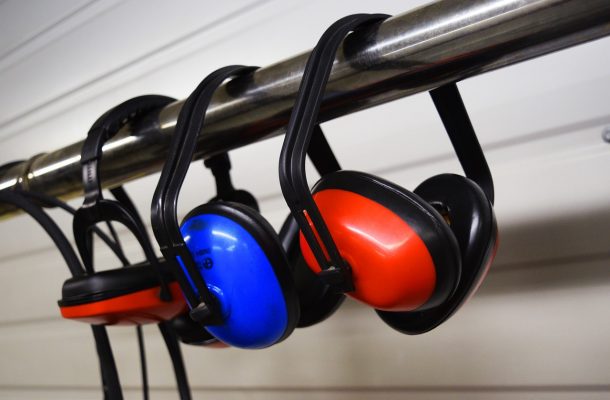Occupational noise control – How to reduce noise in the workplace

Occupational noise exposure is a serious issue that can not only hinder your employees’ performance, but can also cause serious safety and health problems.
In industrial settings, noise can reach hazardous levels, leading to stress, poor performance, possible hearing damage and even accidents. Thus, it’s essential that employers take the necessary measures to limit their employees’ exposure to noise and possibly even eliminate it.
Know the dangers of noise exposure
Before implementing certain noise control solutions, you should be aware of possible negative effects of occupational noise in order to truly understand the importance of noise control.
Occupational noise can cause temporary or permanent hearing loss, which is one of the most common problems in industrial settings. It can also increase stress among employees, which then leads to other health problems such as heart disease, stomach ulcers, nausea and headaches
Furthermore, it can also make your workers more irritable and nervous, and it can disrupt their sleep, causing fatigue and behavioural issues. All of this can also affect their ability to work and decrease their concentration, increasing the risk of accidents in the workplace.
Learn about noise control
There are different approaches to noise control, so take some time to learn more about occupational noise. This will enable you to find appropriate solutions and create a healthier environment for your employees. For instance, you can implement certain engineering noise controls that will modify the noise source.
This entails, for example, picking quiet equipment, using noise barriers or properly maintaining the machinery. On the other hand, administrative approach to noise control entails implementing solutions that can limit or completely eliminate your employees’ exposure to noise.
Conduct an acoustic audit
Once you’ve informed yourself about occupational noise and possible solutions, you should consider having professionals conduct an extensive acoustic assessment in your workplace.
This will enable them to come up with an appropriate plan and suggest an innovative environmental noise control approach that will help you deal with this problem. In addition, experts will be able to identify the exact source of noise and provide you with suggestions that meet your specific needs.
Rethink the workplace layout
If possible, you should consider rearranging your workplace setup and come up with a more functional layout that will keep noisy equipment as far away as possible. You should pick an enclosed area for the machinery while setting up your employees’ workstations in a peaceful environment.
You should consider introducing even some structural changes to the building if necessary to create the best possible layout. This will also provide you with an opportunity to implement better floor and wall insulation that will reduce occupational noise.
Control the source of noise
The best possible approach to noise control is to eliminate its source altogether. For instance, you should consider replacing your noise equipment for the quietest models on the market. However, since most machines produce high noise levels, you can introduce engineering solutions that will modify them and reduce noise.
For instance, you can use quitter types of fans, install mufflers for different machine parts, such as electric motors, pneumatic valves, air compressors, etc., or replace metal parts with plastic ones. Furthermore, you also need to properly maintain and lubricate the equipment to make sure that it runs smoothly.
Finally, placing rubber mats underneath the machines can also reduce noise significantly by eliminating vibration.
Introduce noise barriers and enclosures
Using noise barriers and enclosures is one of the most effective noise control solutions. It entails installing a noise-reducing barrier between equipment and employees.
When installing enclosures and barriers, you need to make sure that they aren’t in contact with the machines and that they consist of sound-absorbent materials. You also need to install mufflers or silencers on the air vents to prevent noise from spreading through ventilation.
Provide your employees with protective equipment
Even when you implement different noise-reducing measures, some workers are still exposed to noise. In such a case, you need to ensure their safety and provide them with protective equipment. This typically entails using ear protection such as earplugs and earmuffs.
However, this isn’t the most effective solution, so it’s necessary that you still implement other methods and limit your workers’ exposure to noise. You should also design noise-free areas where your workers can take a break and relax in a healthy, soothing environment.
When it comes to occupational noise control, you need to take a comprehensive approach and implement various measures to ensure the safety and health of your employees.
Derek Lotts is an experienced freelance writer and researcher. His main areas of interest are small business, home improvement, and sustainable living. He strongly believes in the power of sharing knowledge and ideas through the mediums of modern technology.








